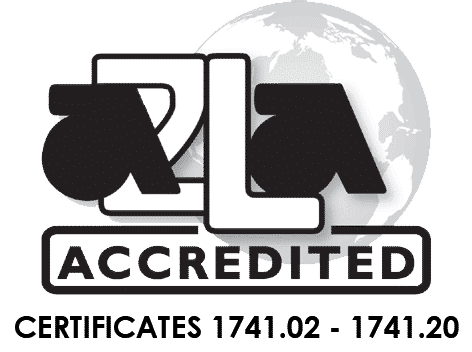The Importance of Handbook 44
What is Handbook 44?
Handbook 44 is a nationally adopted standard created in 1949 that provides scale owners, manufacturers, calibration providers, and Weights and Measures officials with a thorough and robust procedure for verifying scale accuracy. It has been integral to the process of regulating weight measurement, improving quality and consistency, and ensuring integrity in the marketplace.

Errors Detected by Handbook 44
Testing a scale at only one point with one weight introduces a tremendous amount of uncertainty. The rigorous and thorough procedures of Handbook 44 provide more data and minimizes uncertainty and ensures the highest accuracy of equipment.
- Errors in scale linearity: A scale’s performance can vary drastically throughout the range of the scale. The Increasing Load test requires the technician to confirm that the indicated weight matches the certified test weight placed on the scale. This test is repeated multiple times with an increasing amount of certified weight each time.
- Multiplying error: This error occurs when a scale is within tolerance at lower weights, but out of tolerance at the high end of the scale’s capacity. Using multiple test points that include the higher range of the scale is the best way to identify this error. Some heavy capacity scales, like truck scales, will need a Strain Test which uses known weight in conjunction with a higher unknown weight, such as an empty test truck, to verify the accuracy of the scale at test points that are much higher than the limited amount of certified test weights.
- Shift error: The further a test load is placed from the center of a scale, the greater the likelihood of error. A Shift Test involves moving a known amount of weight across the surface of the scale to ensure that each placement agrees with the other readings and is within the specified tolerance.
The Tangible Value of Handbook 44
Handbook 44 provides uniformity of measurement, which aids in inventory control and provides greater yield. Many manufacturers have encountered instances where a part or product is weighed at one location and then re-weighed later at another with a different reading. Utilizing Handbook 44 can minimize customer disputes.
Although scales are built for durability a number of factors such as improper use, lack of maintenance, or extended use will cause a scale to lose accuracy. Handbook 44’s thorough procedures enable a technician to quickly and accurately identify the cause of inaccuracy in a scale, which reduces downtime and eliminates needless repairs.

